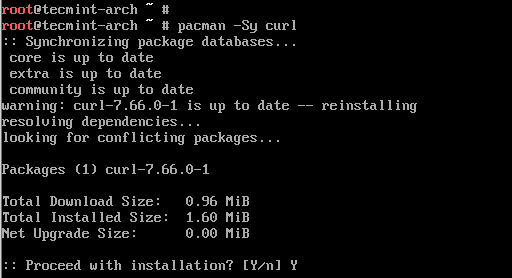

- #How to install curl debian how to#
- #How to install curl debian update#
- #How to install curl debian upgrade#
The simple and easiest way to install Node.js and npm is to install them from the Debian default repository.
#How to install curl debian upgrade#
$ apt upgrade Method 1: Install Node.js and npm from Debian Repository
#How to install curl debian update#
You can do this by running the following commands: $ apt update Additionally, replace ‘root’ with the username of the admin account if necessary.īefore starting, you have to make sure that all Debian OS packages installed on the server are up to date. You will need to replace ‘IP_Address‘ and ‘Port_number‘ with your server’s respective IP address and SSH port number. Log in to the Server & Update the Server OS Packagesįirst, log in to your Debian 11 server via SSH as the root user: $ ssh -p Port_number


The –cacert option is used to provide the CA certificate manually. We can provide the certification authority certificate manually where the remote HTTPS server certificate is validated against this provided CA certificate. The root certificate validation authority is called CA (Certificate Authority). HTTPS uses the SSL/TLS certificates where these certificates are chained together for verification. curl -E mycertificate.cert Provide Certificate Authority (CA) Certificate Manually

In the following example, we will provide the certificate file named mycertificate.cert. The certificate files generally have the “ *.cert” extension. The -E option is used to specify the certificate file. In this method there will be no Certificate Authority approval and the provided certificate is used to communicate with the remote HTTPS web server. curl -insecure Īlternatively the -k option can be used which is the short form of the –insecure.Ĭurl -k Specify SSL/TLS Certificate ManuallyĪnother alternative is providing the SSL/TLS certificate manually. The –insecure option can be used to disable the HTTPS certificate check which will accept all HTTPS certificates which are not signed or valid. If the SSL/TLS certificates are not verified properly because of the self-signed certificate etc. Details: error:14090086:SSL routines:SS元_GET_SERVER_CERTIFICATE:certificate verify failed More details here: Allow Insecure Connectionīy default when the HTTPS protocol is used the remote web server SSL/TLS certificates are checked whether they are valid or not. curl: (60) SSL certificate problem, verify that the CA cert is OK. The following error can be printed when the SSL certificate is not valid. While using the curl command the system default SSL certificates and SSL certificate configuration are used. Debian, Ubuntu, Mint, Kali: sudo apt install curl CentOS, RHEL, Fedora: sudo dnf install curl SSL/TLS Certificate Problem Use following commands to install curl if it is not installed currently. The curl tool or command is provided by all major versions of the Linux distributions.
#How to install curl debian how to#
In this tutorial, we will learn how to use the curl with the HTTPS protocol and solve problems related to HTTPS, SSL/TLS. HTTPS is the secure version of the HTTP protocol where the data is encrypted and the HTTPS server is identified with an SSL/TLS certificate. One of the most popular use cases for the curl is the HTTPS protocol. The curl command is used to get different resources over different protocols like HTTP, HTTPS, FTP, LDAP, IMAP, etc.


 0 kommentar(er)
0 kommentar(er)
